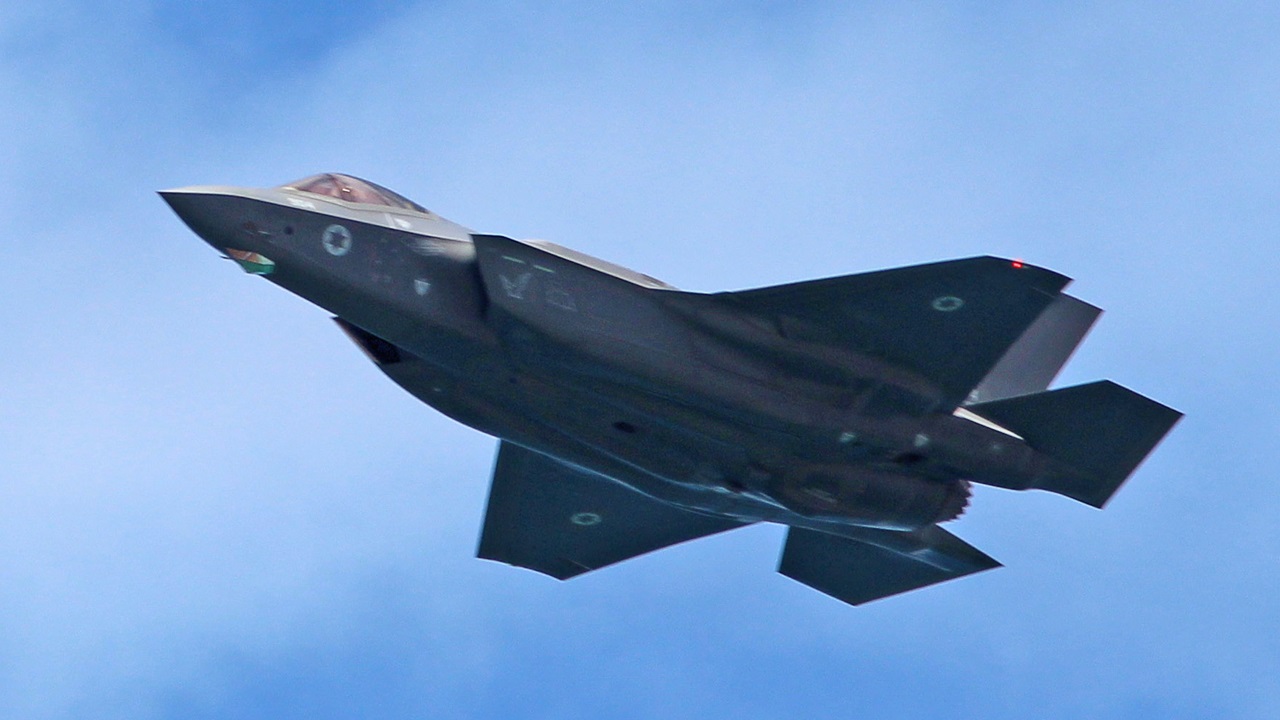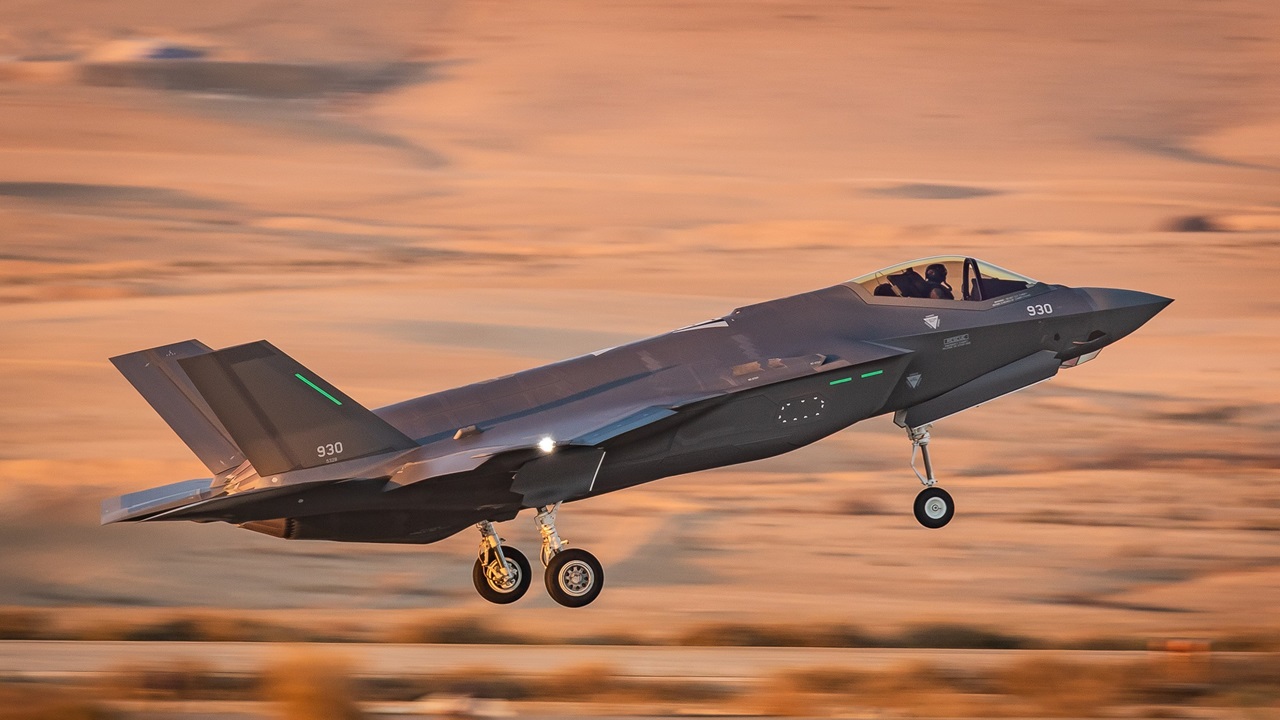Israel Has Customized F-35 Fighters That Can Kill Missiles
It was on Halloween that America's potential adversaries likely received an unpleasant surprise – as an Israeli F-35I Lightning II successfully shot down a cruise missile fired by the Iran-backed Houthis in Yemen. It was the first-ever air-to-air kill of such a weapon by an F-35.
It was on Halloween that America's potential adversaries likely received an unpleasant surprise – as an Israeli F-35I Lightning II successfully shot down a cruise missile fired by the Iran-backed Houthis in Yemen. It was the first-ever air-to-air kill of such a weapon by an F-35.
Video footage of the F-35I "Adir" (Hebrew for "Mighty One") was posted to X, the social media platform formerly known as Twitter.
"In recent days, a cruise missile launched from the southeast toward Israeli airspace was detected by the IAF’s control and detection systems. After tracking the cruise missile’s trajectory, Adir fighter jets were scrambled and successfully intercepted the missile," the Israel Defense Force (IDF) announced via the social media app (see below).
Though it was the first time an F-35 is known to have shot down a cruise missile in flight, the capability has long been discussed. Israel did not specify what weapon was used to intercept the incoming cruise missile.
However, the F-35I variants are armed with both the AIM-9X Sidewinder and Aim-120 AMRAAM missiles.
China, Russia, Iran, North Korea – Watch Out
As Rebecca Grant, president of IRIS Independent Research, noted in a recent op-ed for FoxNews, "The detection and intercept verify that the F-35, flown by the U.S. Air Force, Navy and Marine Corps and many allies, can detect and hit incoming cruise missiles trying to slip by at low altitudes," while she added, "The F-35 capability will only grow."
That latter fact is already being made clear, as it was reported this week that the United States Department of Defense (DoD) has provided Israel with special computer files with detailed information about enemy threats to help the country's fleet of F-35s, which it is using against Hamas.
"We have added some capabilities to that airplane in a very short period of time and our team is doing everything we can to continue to move the ball forward there," F-35 Program Executive Officer Lt. Gen. Michael Schmidt said during House Armed Services tactical air and land forces subcommittee hearing on Tuesday, Defense One reported. "We are always trying to provide spare parts and capabilities to every one of our customers."
Schmidt further suggested that Israel's fleet of F-35Is has performed "absolutely outstanding" in the ongoing war against Hamas. The IDF already holds the title for the first known kill by an F-35, when in May 2018 it shot down two drones it says were launched from Iran in Syria.
Israel Operates an Even More Special F-35
It was in April that three Lockheed Martin F-35 Lightning II fighter jets arrived at Israel's Nevatim Air Base, bringing the Israeli Air Force's total force to 33. An additional 17 of the high-capable fifth-generation stealth aircraft are set to be delivered, bringing the total number of aircraft in service in the Middle Eastern nation to 50.
Israel, which is the sole operator of the F-35 in the Middle East, had previously received three of its planned order of the F-35s in September 2021. Israel became the first foreign nation to select the F-35 through the U.S. government's Foreign Military Sales process when the Letter of Agreement was signed more than a decade ago in October 2010. On June 22, 2016, the Israeli Air Force (IAF) received its first F-35A at a ceremony at Lockheed Martin’s Fort Worth, Texas facilities.
בימים האחרונים זוהה על ידי מערכות הבקרה והגילוי של חיל-האוויר, טיל שיוט, ששוגר מדרום מזרח אל עבר המרחב האווירי של מדינת ישראל. המערכות עקבו אחרי מסלולו של טיל השיוט והזניקו מטוסי קרב ממערך ה״אדיר״, אשר יירטו אותו בהצלחה. pic.twitter.com/6fP6TnlpTm
— Israeli Air Force (@IAFsite) November 2, 2023
While the IDF had been the first foreign military to express interest in the aircraft, it raised the concern that the stealth capabilities could be partly overcome within a decade despite the 30- to 40-year service life. To address this issue, Israel sought to utilize its own electronic warfare system (EWS). Initially, the U.S. had refused to allow such changes but eventually agreed to allow Israel to integrate its own EWS, including sensors and countermeasures, on top of the U.S. systems.
Additional changes included a special, IAF-tailored helmet-mounted display, and bespoke datalink functionality that is specific to the IDF, while other enhancements further improved the F-35's already-potent data gathering and processing capabilities.
All of those new enhancements to the stealth aircraft were significant enough to warrant the "I" designation, making the F-35I one of just a handful of formally acknowledged F-35 variants. In addition, the IAF gave the F-35 the name Adir, which as noted means "Mighty One" in Hebrew.

The IAF currently operates three F-35 squadrons out of Nevatim Air Base, located southeast of Be'er Sheva, near Moshav Nevatim. Those squadrons include the 116 Squadron, "Lions of the South," which became the first IAF unit to transition to the fifth-generation fighter; the 117 Squadron, "First Jet," which operates as an F-35I training squadron; and the 140th Squadron, also known as the "Golden Eagle Squadron," which was reactivated specifically in 2015 to receive the Adir.

Author Experience and Expertise
Peter Suciu is a Michigan-based writer. He has contributed to more than four dozen magazines, newspapers, and websites with over 3,200 published pieces over a twenty-year career in journalism. He regularly writes about military hardware, firearms history, cybersecurity, politics, and international affairs. Peter is also a Contributing Writer for Forbes and Clearance Jobs. You can follow him on Twitter: @PeterSuciu.
All images are Creative Commons.


